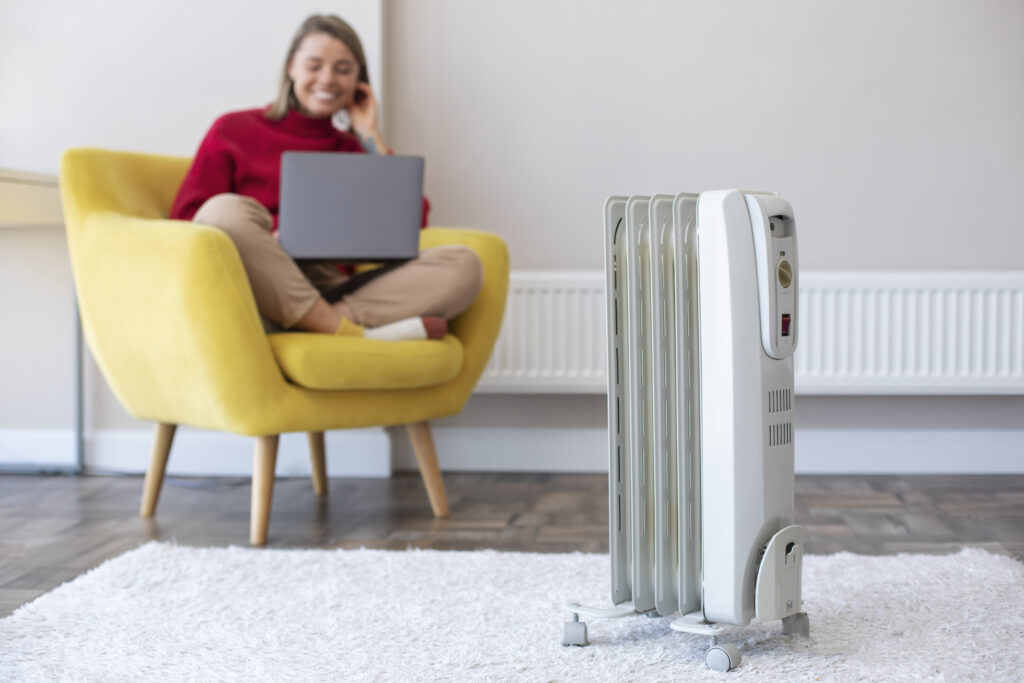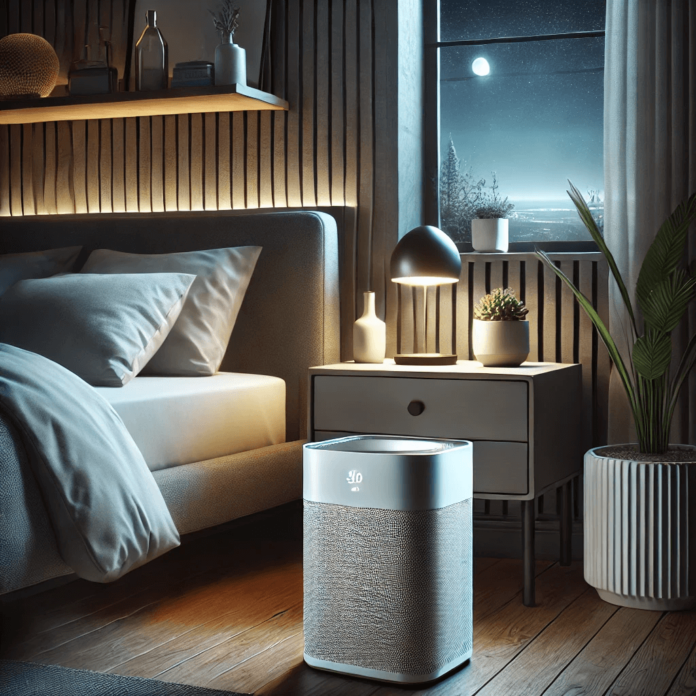Introduction
- seasonal Allergy Solutions: Breathe Easier Indoors
- Understanding Seasonal Allergies
- How Air Purifiers Help Combat Seasonal Allergies
- Benefits of Air Purifiers for Allergy Sufferers
- Choosing the Right Air Purifier for Seasonal Allergies
- Top Air Purifiers for Seasonal Allergies
- How to Maximize Your Air Purifier’s Effectiveness
- Air Purifiers vs. Other Allergy Solutions
- The Role of Air Purifiers in Managing Seasonal Allergies
- Future Innovations in Allergy Relief
- Understanding Seasonal Allergies
- Conclusion
Seasonal allergies can disrupt your daily life with symptoms like sneezing, congestion, and itchy eyes. Finding effective seasonal allergy solutions is essential for maintaining comfort and well-being. Among these solutions, air purifiers stand out for their ability to provide allergy relief by removing airborne irritants such as pollen, mold spores, and dust mites. Equipped with HEPA filters, these devices capture up to 99.97% of allergens, creating a healthier indoor environment. In this guide, we’ll explore how air purifiers and other remedies can help you combat seasonal allergies and breathe easier all year round. Seasonal allergies can make certain times of the year unbearable for millions of people. Sneezing fits, itchy eyes, nasal congestion, and fatigue are common symptoms triggered by allergens like pollen, mold spores, and dust mites. While medication provides temporary relief, air purifiers offer a proactive solution by targeting allergens before they can cause problems. Explore this detailed guide on how air purifiers combat seasonal allergies, their remarkable benefits, and tips for selecting the perfect purifier for your needs.
seasonal Allergy Solutions: Breathe Easier Indoors

Seasonal allergies can turn your home into an uncomfortable space, especially when pollen counts rise. Incorporating effective seasonal allergy solutions, such as air purifiers, can significantly reduce allergy symptoms.
Understanding Seasonal Allergies
What Are Seasonal Allergies?
Seasonal allergies, also known as hay fever or allergic rhinitis, occur when the immune system overreacts to environmental allergens like pollen, mold, and dust. These allergens are most prevalent during specific times of the year, often aligning with blooming flowers, grasses, and trees.
Common Symptoms
- Sneezing and nasal congestion
- Itchy or watery eyes
- Scratchy throat
- Fatigue or lethargy
- Difficulty breathing in severe cases
Top Triggers
- Pollen: Released by trees, grasses, and weeds.
- Mold Spores: Thrive in damp, humid conditions.
- Dust Mites: Found in bedding, upholstery, and carpets.
How Air Purifiers Help Combat Seasonal Allergies
Air purifiers are designed to improve indoor air quality by removing airborne allergens and irritants. They work by drawing in contaminated air, filtering out pollutants, and releasing purified air back into the room.
Key Mechanisms
- HEPA Filters: Capture 99.97% of airborne particles as small as 0.3 microns, including pollen, dust, and mold spores.
- Activated Carbon Filters: Effectively absorb odors, smoke, and volatile organic compounds (VOCs) to create a fresher and healthier indoor environment.
- UV-C Light Technology: Kills bacteria, viruses, and mold spores that are too small to be filtered.
- Ionizers: Release negatively charged ions to bind with particles, causing them to fall from the air.
Benefits of Air Purifiers for Allergy Sufferers
1. Reduced Allergens
High-efficiency particulate air (HEPA) filters trap allergens like pollen and dust mites, ensuring cleaner air and fewer allergy triggers.
2. Odor Elimination
Activated carbon filters neutralize odors caused by mold, cooking, and pets, creating a fresher indoor environment.
3. Improved Respiratory Health
By removing airborne irritants, air purifiers help alleviate nasal congestion, throat irritation, and breathing difficulties.
4. Enhanced Sleep Quality
Allergen-free air promotes uninterrupted sleep, reducing nighttime symptoms like coughing and congestion.
5. Reduced Mold Growth
Air purifiers with UV-C light inhibit mold spore reproduction, preventing further spread in damp areas.
Choosing the Right Air Purifier for Seasonal Allergies
Selecting the right air purifier is essential for maximizing its benefits.
Key Features to Consider
- True HEPA Filter: Ensure the purifier uses a certified HEPA filter for optimal allergen removal.
- Coverage Area: Match the purifier’s capacity to your room size for effective filtration.
- Noise Levels: Choose a quiet model for use in bedrooms or shared spaces.
- Energy Efficiency: Look for Energy Star-certified purifiers to reduce electricity costs.
- Smart Features: App control, air quality sensors, and timers add convenience.
Top Air Purifiers for Seasonal Allergies
1. Levoit Core 300S
- Features: True HEPA filter, activated carbon, quiet operation.
- Pros: Affordable, compact, and effective for small spaces.
- Cons: Limited coverage for larger rooms.
- Ideal For: Bedrooms and offices.
2. Dyson Pure Cool TP07
- Features: HEPA filtration, fan functionality, smart sensors.
- Pros: Stylish design, dual-purpose air purification and cooling.
- Cons: High price point.
- Ideal For: Larger living spaces.
3. Honeywell HPA300
- Features: Equipped with HEPA filtration, a large coverage area, and multiple fan speeds, these air purifiers ensure optimal performance and customizable air quality control.
- Pros: High CADR rating, excellent for large rooms.
- Cons: Slightly noisy on higher settings.
- Ideal For: Multi-purpose rooms and households with severe allergies.
How to Maximize Your Air Purifier’s Effectiveness
Using an air purifier correctly ensures the best results.
Placement Tips
- Central Location: Position the purifier in the room where you spend the most time.
- Away from Obstacles: Avoid placing it against walls or furniture, which can obstruct airflow.
- Near Allergy Hotspots: Set up purifiers near windows or doors where allergens enter.
Maintenance Tips
- Replace Filters Regularly: Change HEPA filters every 6-12 months and clean pre-filters as needed.
- Monitor Air Quality: Use air quality indicators to adjust purifier settings.
- Vacuum Regularly: Reduce dust and allergens on floors and furniture to complement the purifier’s efforts.
Air Purifiers vs. Other Allergy Solutions
Medication
While antihistamines and decongestants provide immediate relief, air purifiers tackle the root cause by removing allergens from the air.
Nasal Irrigation
Devices like neti pots are effective for clearing nasal passages but don’t address airborne triggers.
Dehumidifiers
Dehumidifiers reduce mold and dust mites by controlling humidity but lack the filtration capabilities of air purifiers.
The Role of Air Purifiers in Managing Seasonal Allergies
Preventive Care
Air purifiers create a proactive defense against allergens, reducing the likelihood of symptoms.
Year-Round Benefits
Though primarily used during allergy seasons, air purifiers improve overall indoor air quality year-round by removing pollutants like smoke, VOCs, and pet dander.
Family Health
Investing in air purifiers benefits not just allergy sufferers but everyone in the household, promoting better respiratory health and overall well-being.
Future Innovations in Allergy Relief
- Advanced Filtration: New HEPA designs targeting ultrafine particles like viruses.
- Smart Connectivity: IoT-enabled purifiers offer real-time air quality monitoring, allowing seamless control and instant adjustments through connected devices for enhanced convenience.
- Eco-Friendly Models: Energy-efficient and sustainable materials for reduced environmental impact.
Conclusion
Air purifiers are a powerful tool for combating seasonal allergies, offering cleaner air and significant relief from symptoms. By choosing the right purifier, maintaining it properly, and pairing it with other preventive measures, you can create a healthier, allergy-free living environment. Whether you’re tackling springtime pollen or year-round dust mites, an air purifier provides a simple yet effective solution for better air quality and improved well-being.














